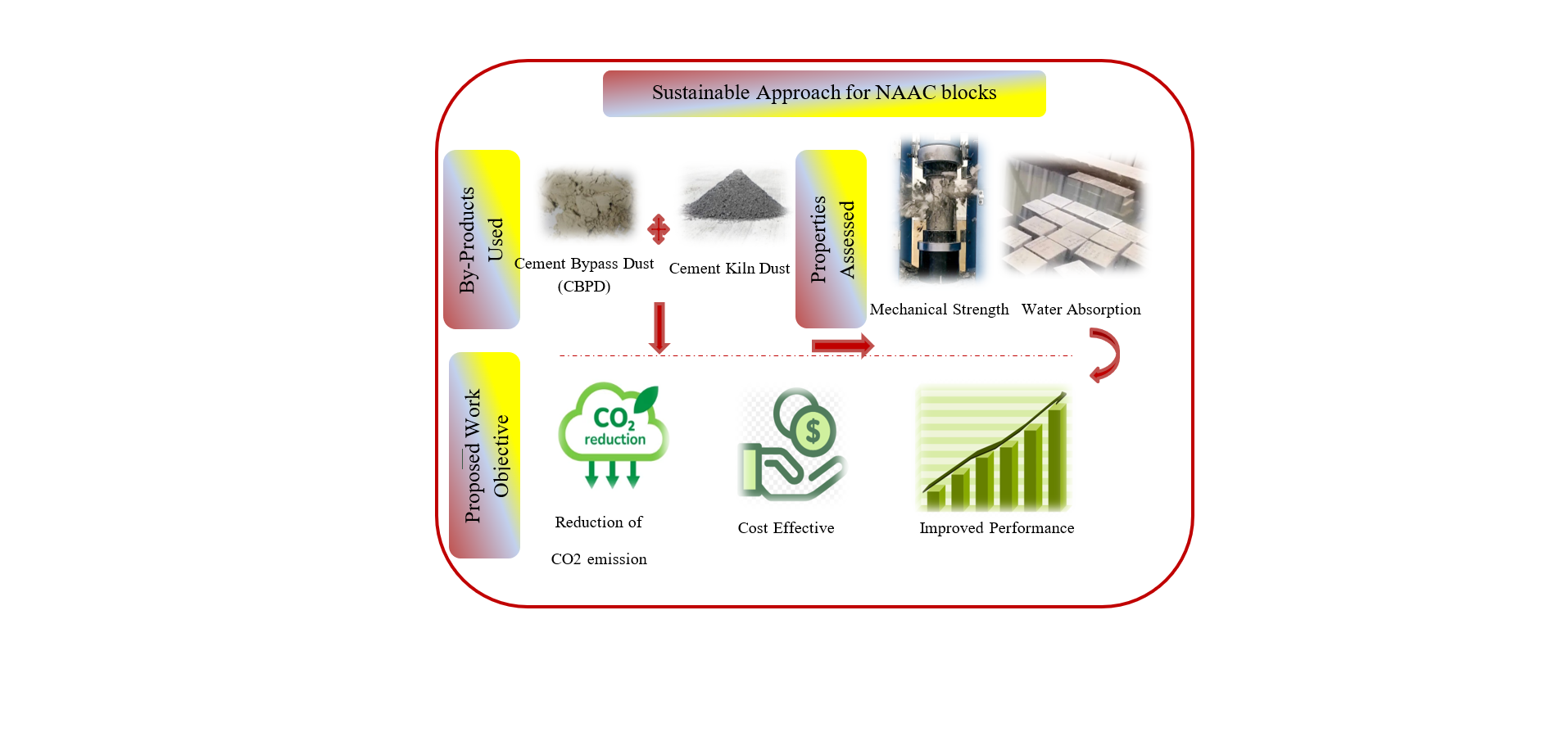
Nowadays cement industry power plant bed wastes can be used to create aerated concrete blocks for widespread usage in the construction sector instead of sand. The optimum materials for building enclosures for a variety of uses include aerated concretes. To enhance the physical and mechanical qualities of Non-Autoclaved Aerated Concrete (NAAC) blocks, bed material is introduced in this study as a superior alternative material. The non-autoclaved concrete blocks in this study are made with cement, bed materials, fly ash, gypsum, and a consistent amount of 0.65 grams of aluminium powder. The mix preparation and method employed for manufacturing NAAC blocks, the composition of mix specimens and the dosing and mixing processes have been expounded upon, shedding light on the critical steps in the production. According to the suggested method in IS 2185 (Part III) of 1984, the proportion of bed materials was taken by volume of compacted dry material for NAAC of Size 22cm x 10.5cm x 7cm. Experiments into the NAAC block's compressive strength plus water absorption of the bed materials were followed by comparisons of these characteristics with clay and fly ash bricks sold in the market. As a result, NAAC blocks met the 6 MPa strength criteria specified by Indian Standard code IS2185 (Part III): 1984. However, the strength of the aforementioned NAAC brick at 28 days was 7.28 MPa for Sample T5. A more in-depth presentation of the testing methods, focusing on the compressive strength tests was conducted at various intervals (7, 14, 21, and 28 days). The density values and water absorption rates for each test sample (T1 to T5) are now presented with additional insights into the observed trends. According to the research, blocks manufactured with NAAC bed materials tend to be stronger and lighter than those made with conventional clay bricks. They also produce non-autoclaved concrete blocks. Therefore, the creation of such inexpensive blocks can be employed for extensive production.
Total file downloads: 23